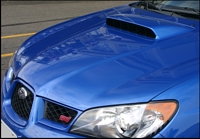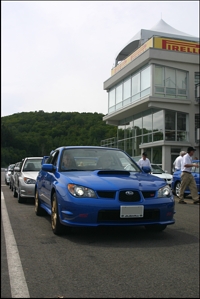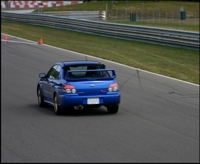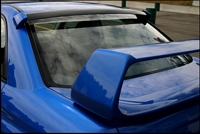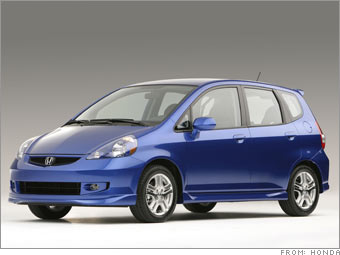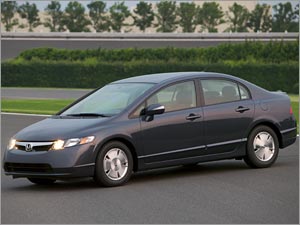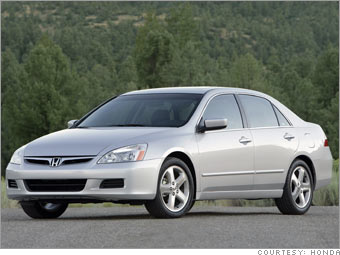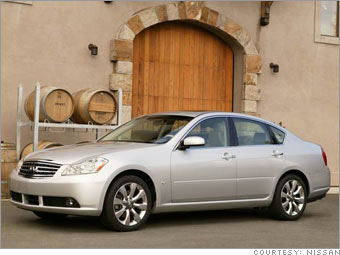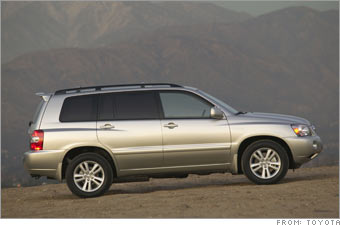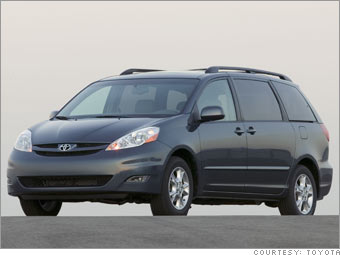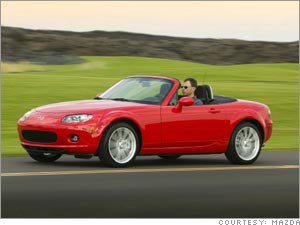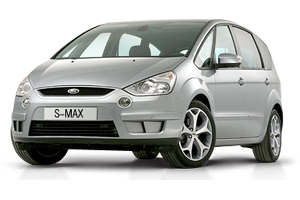 Most MPVs, multi-purpose vehicles, big, medium or small by their very nature are not the most stylish of vehicles, Renault’s Grand Espace being the exception.
Most MPVs, multi-purpose vehicles, big, medium or small by their very nature are not the most stylish of vehicles, Renault’s Grand Espace being the exception. The designers concentrate on getting the maximum amount of seats and load space in a given length. The vehicles tend to be tall, unsporting in looks, barges to drive as well making them difficult to get into height restricted car parks and typical modern house garages.
Most are very well equipped to meet the needs of up to seven passengers but the driveability of them is ‘efficiency’ rather than ‘sporting’. The other option for customers has been to buy a seven seat 4x4 instead of an MPV, or even a large estate, but there again the driveability is always compromised.
The Mercedes R-Class six-seater launched earlier was the first example of a totally new type of multi-seat sports vehicle which really looks ‘the business’ and drives as well as any passenger car. But it is very expensive and unlikely to be a volume seller in the mass market.
Ford’s clever answer was to launch a month ago the S-Max and to create the all-new and much larger Galaxy MPV. The new Galaxy will in the main continue to be used by companies and hotels, as executive business transport and by the hire and reward industry. Until the Galaxy comes back onto the market as a used vehicle in a few years time this vehicle is too expensive and still probably too large to be considered for family transport.
Roll out the five-door Ford S-Max. This is a slightly smaller version of the Galaxy with a lower roof, sleeker design with sporty front and rear ends. It can be ordered in five or seven seat configuration. It sits neatly in the much improved Ford range between the Mondeo and Galaxy and it is an optional choice MPV model from the smaller Focus based C-Max.
For its UK sales launch I wrote numerous amounts of news stories about the S-Max because it is being used by Ford to improve the overall image of their brand. It now suggests Ford can really make stylish vehicles rather than just functional mass production models.
I do not usually re-visit a new model so soon after its launch but the S-Max intrigued me. Is it really as good and desirable as my brief initial test drive suggested it was? In short it is.
Many people, even those without the need for seven seat vehicles, find an MPV a useful vehicle, it’s all about transporting what you need to carry whether at work or play. It is fair to say that many people are put off by owning an MPV, they want something more stylish and trendy and that is where the S-Max fits the bill. Although the main selling models have seven seats most people will only need to use five of them leaving the two smaller rear seats folded into the floor so creating a large load area. The good thing about the S-Max, unlike many other large MPVs, is that the middle and rear rows of seats can be folded away, they do not need to be taken out and stored in the garage. They are there with you all the time just in case you need them. Not so well thought out is the carpet covering to the rear seat backs that needs to be unclipped and folded out in panels to create a flat load floor. Not clever or very neat.
In addition the S-Max is stylish and no potential owner would be put off having one of them sitting on their driveway. It looks a much more classy and expensive vehicle that the £16,995 to £21,495 price tags suggest. True not all models are that well equipped and some will need the extra costs options to bring them up to luxury levels but overall it looks a smart user-friendly vehicle rather than a luxury van with windows.
The range is available with a choice of two petrol and three turbocharged diesel engines. For petrol buyers you can chose the 2.0-litre, 145PS unit or the 2.5-litre, turbocharged 220PS engine. Diesel customers have the choice of a 1.8-litre 125PS unit, 2.0-litre 130PS and the 2.0-litre 140PS. The latter is the choice unit for me as it gives performance to go with the sporting looks. Transmissions are either five or six speed manual units depending on the model chosen
Each engine option is available with LX, Zetec or Titanium trim and specification levels and probably the mid Zetec level will be the most popular. All models have air conditioning. The LX has electric front windows, Zetec and Titanium have rear electric windows as well together with alloy road wheels. Titanium models add a CD changer, automatic lights and wipers and the all important front and rear parking sensors. All models are well equipped with numerous airbags.
My test model was the S-Max 2.0 TDCi, 140PS variant with top of the range Titanium specification and a six-speed gearbox. Price, £21,495 which is pretty competitive. You can pay that for a well equipped saloon or estate that doesn’t have the style or versatility of the S-Max. It is the same price as the similarly ‘specced’ VW Touran and Toyota Verso MPVs but it is much bigger. However my vehicle had numerous extra cost options including the excellent and user friendly Ford navigation system and the panoramic glass sunroof so the total price package of the test car was £25,895, a bit steep.
The driving position or though slightly elevated is not as high as in other MPVs. You feel part of the vehicle. Visibility is generally good although the front pillars do compromise vision at the front quarters. With the sloping front bonnet and overall length of the vehicle, parking sensors are a must.
The all important load space ranges from 285-litres with three rows of seats in place, 854- litres of space with the rear seats folded and five seats still useable up to 2,000-litres with the second and third rows folded down. Just as important is the fact that the load length with just the front two seats being used is two metres, long enough to sleep in if you so wish.
The 2.0-litre, direct injection turbodiesel engine is well known as a strong and flexible performer and it gives the right blend of relaxed high speed driving, good acceleration when needed, its responsive and flexible around town and its pretty frugal, 38.5mpg during my extended test period with the car.
MILESTONES:
Ford S-Max 2.0 TDCi Titanium.
Engine: 2.0-litre, four-cylinders, direct injection turbodiesel, 140bhp, 320Nm of torque from 2,000rpm
Performance: Top speed 120mph, 0-62mph 10.2 seconds, 42.8mpg (actual 38.5mpg)
CO2: 169g/kmFor: Non MPV sporty styling, sharp handling, flexible roomy interior, refined, generally well priced.
Against: Third row of seats are cramped for adults and the clumsy fold out carpeting arrangement needed to create a flat and protected floor for the load area.
--
src: www.askaprice.com




